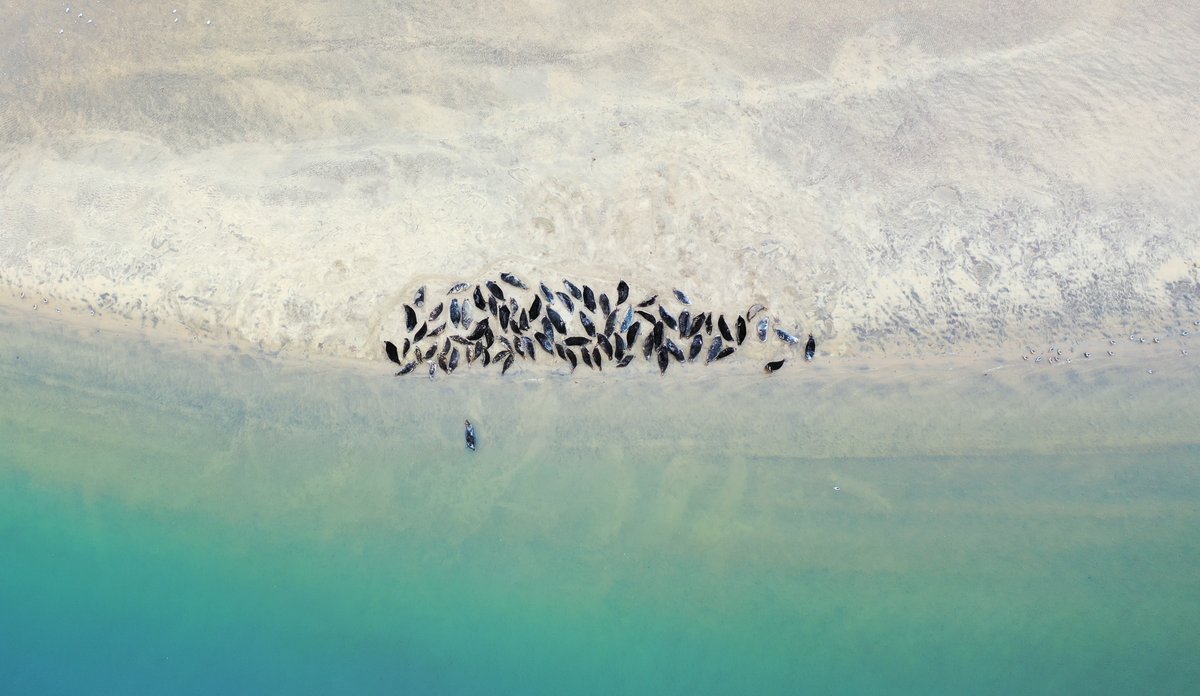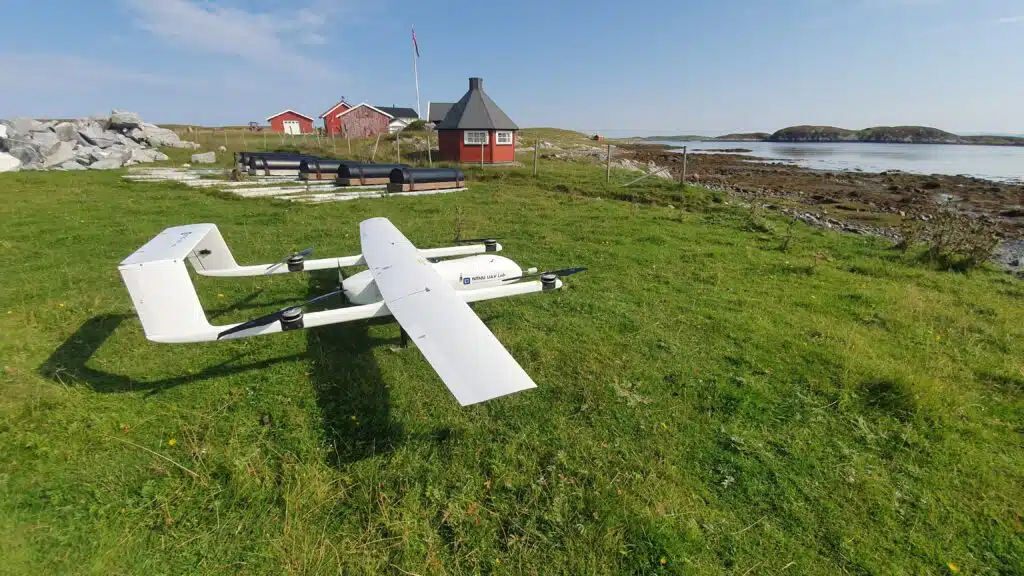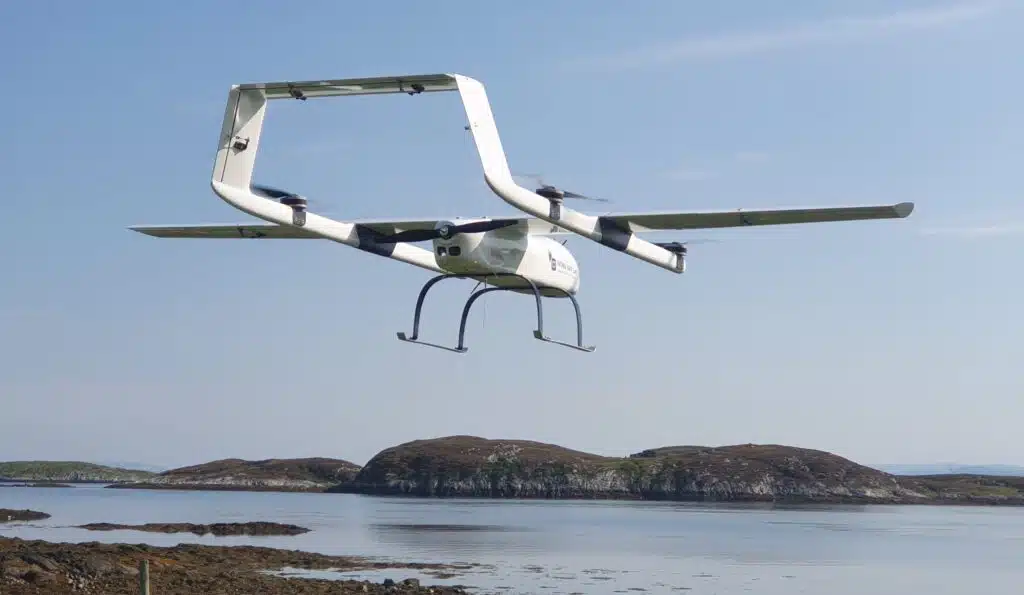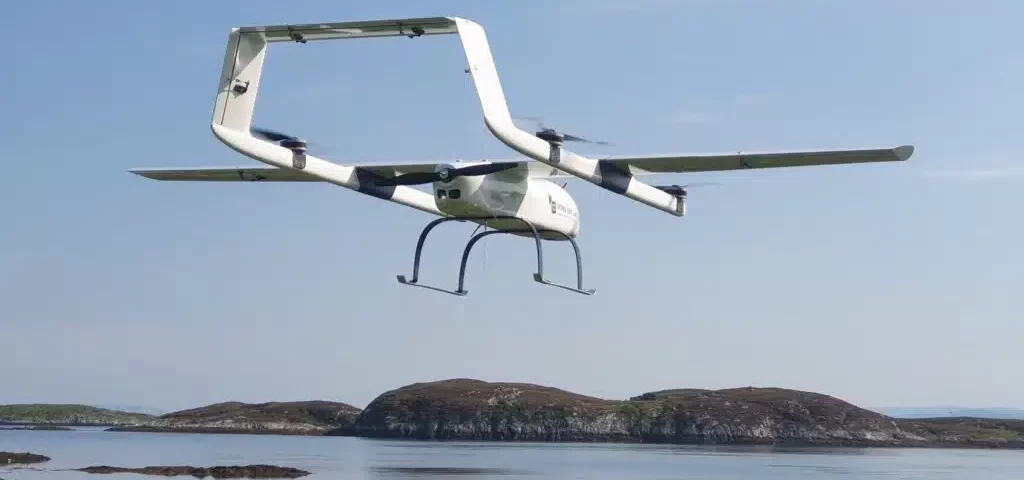In the vast and diverse marine landscapes of Norway, understanding and monitoring the coastal seal populations is crucial. These seals, both harbour and grey, play a pivotal role in the marine ecosystem, acting as top predators and significantly interacting with coastal fisheries. However, counting and monitoring these seals, especially in expansive archipelagos, can be a daunting task. This is where Seabee stepped in to revolutionize the process by using the Mugin-2 Pro 2930 VTOL UAV.
The Challenge:
Counting seals is not just about numbers; it’s about ensuring the sustainability of the marine ecosystem. Seals can sometimes be caught and drowned in fishing gear, leading to bycatch. Reliable estimates of their population size are vital to determine if the bycatch levels are sustainable for seal populations. Traditional methods of counting, especially in large archipelagos, can be challenging and time-consuming.

The photos here were taken with drones during the annual count of harbor seals.
Photographer: Michael Poltermann/HI

Mugin-2 Pro VTOL UAV Ready for take-off at Tarva during SeaBee field mission in 2022. Photo by Martin Biuw, Institute of Marine Research
Why Mugin-2 Pro?
Seabee’s choice of the Mugin-2 Pro was strategic. With its Vertical Take-Off and Landing (VTOL) capabilities, this drone was perfect for areas like Tarva, which lack flat surfaces for take-off and landing. The drone could operate autonomously for extended periods, covering vast areas, making it ideal for the expansive Norwegian coastlines.
The Mission in Action:
During the mission, the Mugin-2 Pro maintained a flight altitude of 200m. This height was a calculated decision to balance extensive spatial coverage while ensuring effective seal detection. The drone soared over the waters, capturing images and data.
However, while the drone’s operations were impeccable, Seabee identified potential areas of improvement. The image resolution, for instance, could be enhanced for even more precise seal detection. The team is also considering integrating infrared (IR) capabilities for future missions, allowing seals to be spotted based on their heat signatures.
Towards Automation:
One of the significant outcomes of using the Mugin-2 Pro was the acquisition of numerous images. While many images captured the seals clearly, some made it challenging to distinguish seals from their backgrounds. To address this, Seabee is working on developing a machine-learning system to automatically detect seals in these images, streamlining the analysis process.
Conclusion:
The application of Mugin-2 Pro by Seabee is a testament to the power of technology in aiding environmental research and conservation. By leveraging advanced drone technology, Seabee is not only ensuring the sustainability of the marine ecosystem but also pioneering innovative methods for marine research. The future looks promising, with more advanced missions on the horizon, further bridging the gap between technology and nature.

Mugin-2 Pro in action. Photo: Martin Biuw, Institute of Marine Research
The news is based on the article of Seabee: https://seabee.no/seeing-seals-with-seabee-exploring-drone-use-in-counting-seals/


